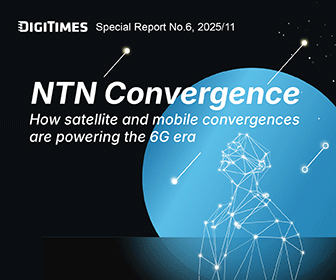India's financial landscape is undergoing a digital revolution, transforming everyday transactions across the country. From bustling teashops on street corners to gleaming international brand stores in upscale markets, cash is becoming a relic of the past.
Vendors are increasingly turning to the simplicity and convenience of QR codes. With just a mobile phone and the Unified Payments Interface (UPI) developed by the National Payments Corporation of India, payments are now quick and effortless.
According to the Reserve Bank of India's (RBI) latest index, which tracks the uptake of online transactions, digital payments in India have surged by 12.6 percent over the past year. The RBI's Digital Payments Index climbed to 445.5 by the end of March 2024, up from 418.77 in September 2023 and 395.57 in March 2023.
This significant increase has boosted demand for data centers within India's financial sector. As a result, companies are rapidly expanding their infrastructure to keep pace with the growing need for robust and secure data management solutions.
Exponential growth in data center demand
Piyush Somani, founder, CMD, and CEO of ESDS Software Solution, noted that the rise in UPI transactions has significantly influenced the demand for his company's data center solutions.
"Over the past year, we have observed a substantial increase in demand, with our data center services experiencing growth of approximately 100 percent due to the surge in digital payments," Somani said. "This has led to an increase in client requirements for higher data processing capabilities, enhanced storage solutions, and real-time transaction processing. Clients are now seeking more scalable and resilient infrastructure to handle the growing volume and complexity of transactions."
Others in the industry echo similar sentiments. Amrish Pipada, founder & MD of Mega Networks, reported that their overall sales from the financial sector have grown 30 percent in recent years, with around 4 percent coming from UPI.
"The rise in transaction volumes has been significant," Pipada explained. "This surge has driven the demand for scalable and reliable data handling infrastructure. UPI's system is robust, offering high scalability, availability, data security, and regulatory compliance. Whether it's a transaction of five rupees or five hundred thousand, the OTP-based security ensures a very secure system."
Hirdey Vikram, CMO of Netweb Technologies, added that banks are increasingly adopting digital services to enhance customer experiences. Netweb designs and builds motherboards for data center servers.
"The volume of data generated by banking activities has grown exponentially," Vikram said. "This includes transaction data, customer data, financial records, and regulatory compliance data. Efficient data storage, processing, and management are critical, driving the need for more advanced and scalable data centers."
Enhancing security in the digital age
The increased demand has also highlighted the need for more secure systems. With the rise in cyber threats, banks are investing heavily in secure data centers to protect sensitive financial data.
Advanced cybersecurity measures, including encryption, firewalls, and intrusion detection systems, are essential components of modern data centers.
"Given the critical importance of data security in financial transactions, ESDS has implemented several enhanced security measures to protect the integrity and privacy of UPI data flowing through our data centers," Somani said. "These measures include PCI-DSS compliance for the entire Cloud infrastructure, regular RBI audits, security audits, and penetration testing from CERT-IN authorized agencies. We also adhere to stringent compliance standards to ensure the highest level of data protection."
Pipada noted that enhanced security measures are a priority, especially with AI-enabled solutions becoming more popular.
"For instance, when dealing with AI servers that process millions of commands per second, robust security is paramount," Pipada said. "We're working on various enhancements, including firewalls, to secure these systems. Our outlook also includes significant investments in AI and large language models (LLMs), which are seeing a lot of development in India. We aim to establish a strong footprint in this area."
Along with ensuring security, companies must also navigate India's regulatory system, which often presents its own set of challenges.
"We foresee both challenges and opportunities with upcoming regulations, such as the Data Privacy Act and the Data Localization requirement from RBI and the government of India," Somani said. "Our strategy involves staying ahead of regulatory changes through continuous adaptation and leveraging our expertise to turn regulatory requirements into opportunities for innovation."
Future prospects and technological advancements
Looking ahead, ESDS expects the demand for data center services to continue its upward trajectory as UPI and other digital payment systems expand. The company anticipates a substantial 50 percent annual increase in demand over the next five years.
However, challenges persist as the global tech landscape increasingly demands high-end processors capable of powering AI technology in data centers.
"I would say that day by day, the requirements of systems are getting more complex," Pipada said. "As complexity increases, the supply chain needs to adapt. The chain has been badly affected over the past two and a half years, particularly in the AI arena. Companies like Nvidia, AMD, or Intel are facing significant challenges with the supply of GPUs, which are in scarce supply."
Even in networking, where 10G and 25G were previously discussed, the focus has now shifted to 400G and 800G. Companies need to provide these kinds of solutions to remain competitive.
"In markets like the US, AI adoption has surged dramatically," Pipada said. "The scale of installations in the US is tremendous, with investments reaching billions of dollars, a trend that India is likely to follow soon."
As India continues its digital payment revolution, the data center industry stands poised for significant growth and innovation, adapting to meet the evolving needs of a rapidly digitalizing financial landscape.



